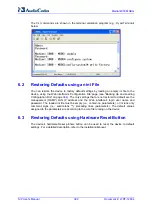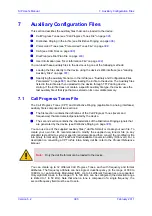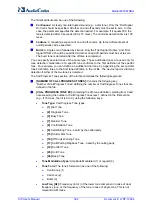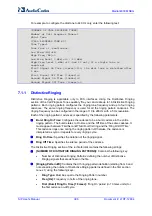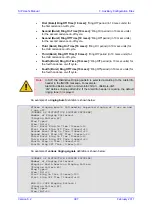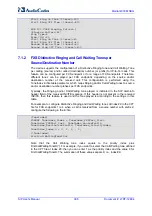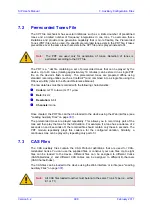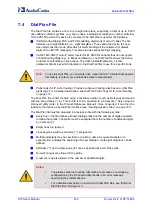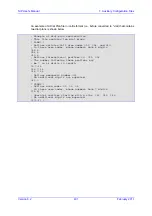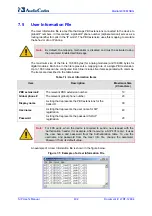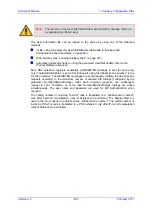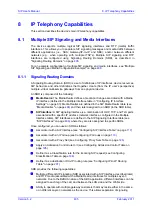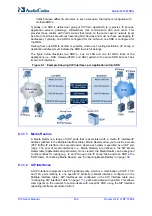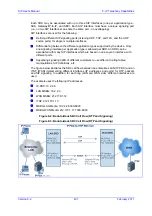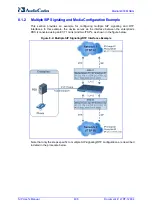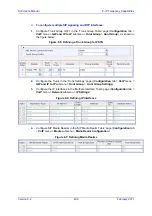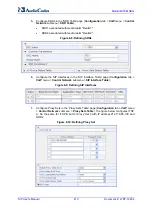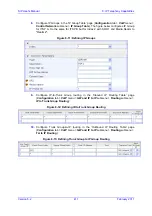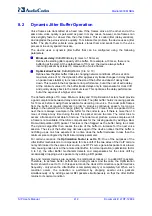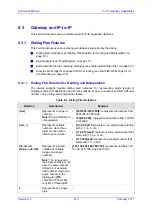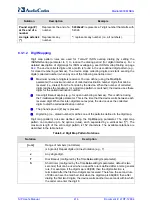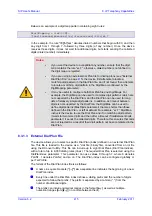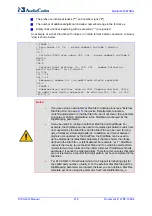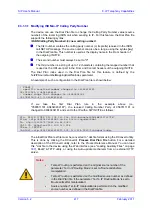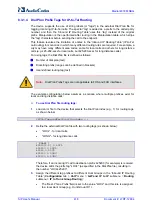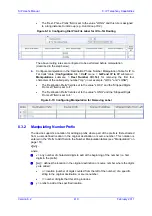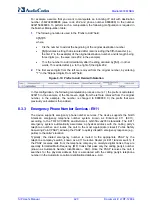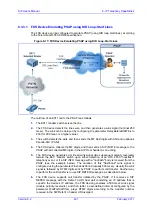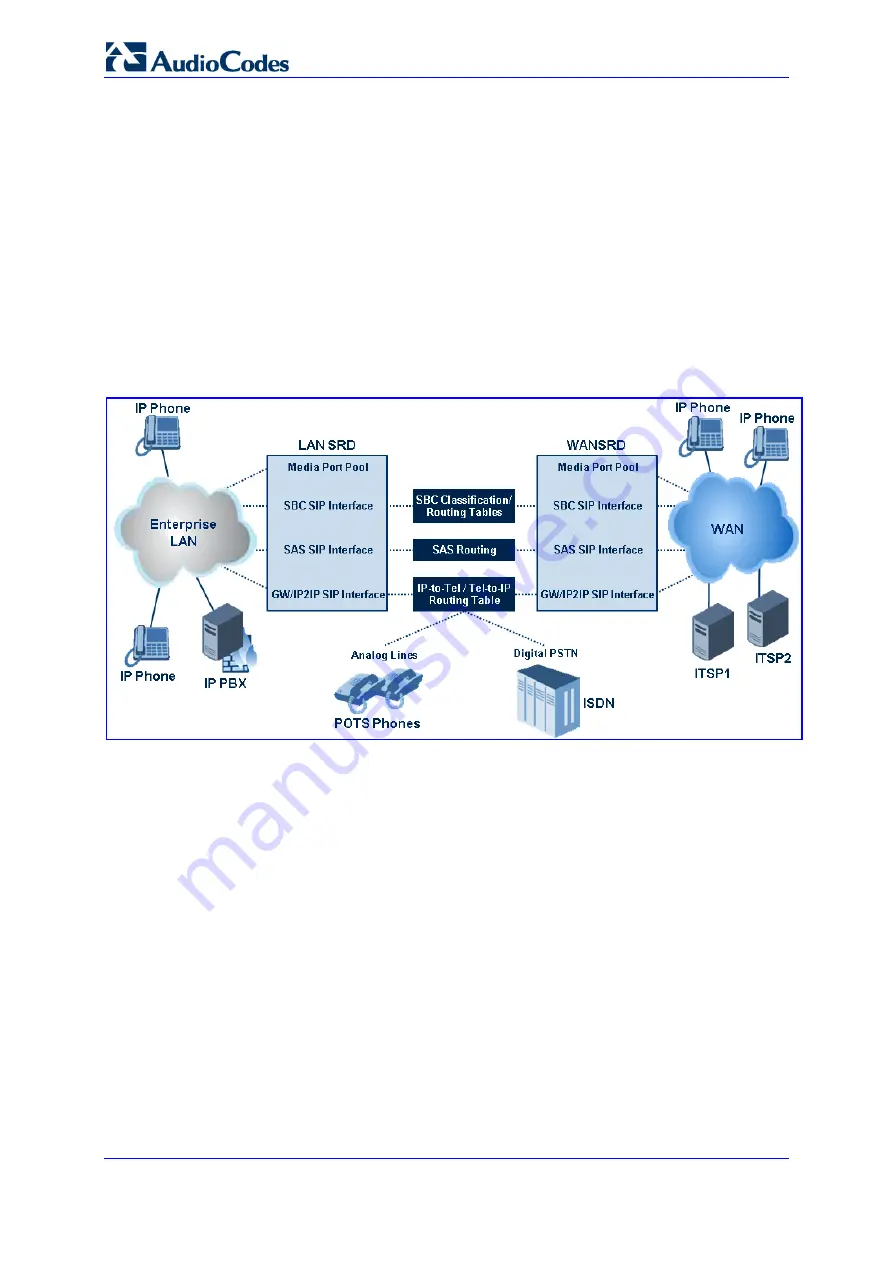
SIP User's Manual
406
Document #: LTRT-12804
Mediant 800 MSBG
traffic between different customers. In such a scenario, the device is configured with
multiple SRD's.
Typically, one SRD is defined per group of SIP User Agents/UA (e.g. proxies, IP phones,
application servers, gateways, softswitches) that communicate with each other. This
provides these entities with VoIP services that reside on the same Layer-3 network (must
be able to communicate without traversing NAT devices and must not have overlapping IP
addresses). Typically, one SRD is configured for the LAN and one SRD is configured for
the WAN.
Routing from one SRD to another is possible, where each routing destination (IP Group or
destination address) must indicate the SRD to which it belongs.
The figure below illustrates two SRD's - one for LAN and one for WAN. Each of the
applications (i.e., SAS, Gateway\IP2IP, and SBC) pertain to the same SRD, but each has
its own SIP interface.
Figure
8-1: Example Showing SIP Interfaces per Application within SRD
8.1.1.1 Media Realms
A Media Realm is a range of UDP ports that is associated with a media IP interface/IP
address (defined in the Multiple Interface table). Media Realms allow you to divide a media
(RTP traffic) IP interface into several realms, where each realm is specified by a UDP port
range. The pool of media interfaces (i.e., Media Realms) are defined in the SIP Media
Realm table (CpMediaRealm parameter). Once created, the Media Realm can be assigned
to other entities for routing (e.g., to an IP Group in the 'IP Group' table and to an SRD in the
'SRD' table). For defining Media Realms, see ''Configuring Media Realms'' on page
8.1.1.2 SIP Interfaces
A SIP Interface represents one SIP signaling entity, which is a combination of UDP, TCP,
and TLS ports relating to one specific IP address (network interface, configured in the
Multiple Interface table). SIP Interfaces are configured in the SIP Interface table (see
''Configuring SIP Interface Table'' on page
), each associated with an SRD. This allows
User Agents on the network to communicate with a specific SRD, using the SIP Interface
(signaling interface) associated with it.
Summary of Contents for Mediant 800 MSBG
Page 2: ......
Page 366: ...SIP User s Manual 366 Document LTRT 12804 Mediant 800 MSBG Reader s Notes ...
Page 372: ...SIP User s Manual 372 Document LTRT 12804 Mediant 800 MSBG Reader s Notes ...
Page 390: ...SIP User s Manual 390 Document LTRT 12804 Mediant 800 MSBG Reader s Notes ...
Page 404: ...SIP User s Manual 404 Document LTRT 12804 Mediant 800 MSBG Reader s Notes ...
Page 616: ...SIP User s Manual 616 Document LTRT 12804 Mediant 800 MSBG Reader s Notes ...
Page 636: ...SIP User s Manual 636 Document LTRT 12804 Mediant 800 MSBG Reader s Notes ...
Page 652: ...SIP User s Manual 652 Document LTRT 12804 Mediant 800 MSBG Reader s Notes ...
Page 886: ...SIP User s Manual 886 Document LTRT 12804 Mediant 800 MSBG Reader s Notes ...

